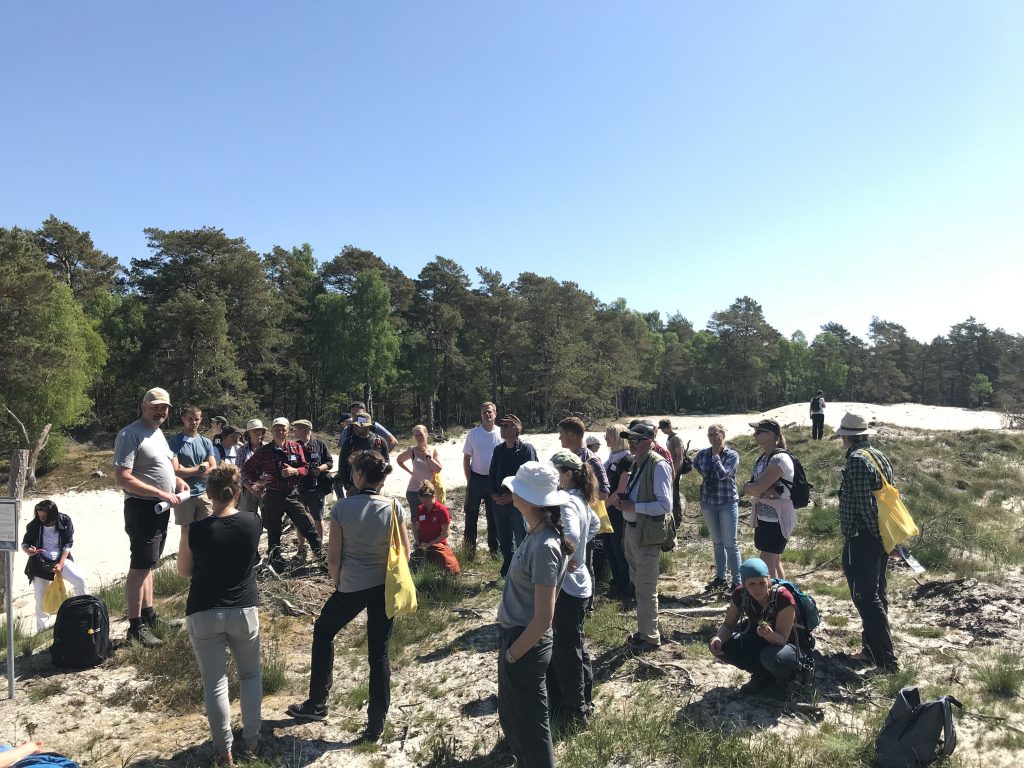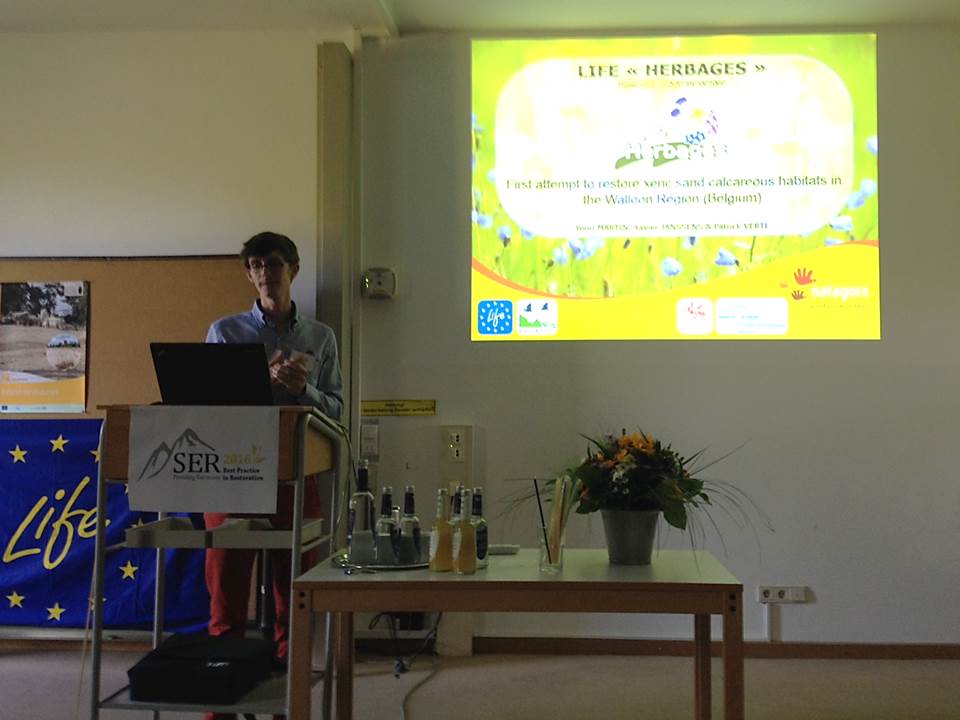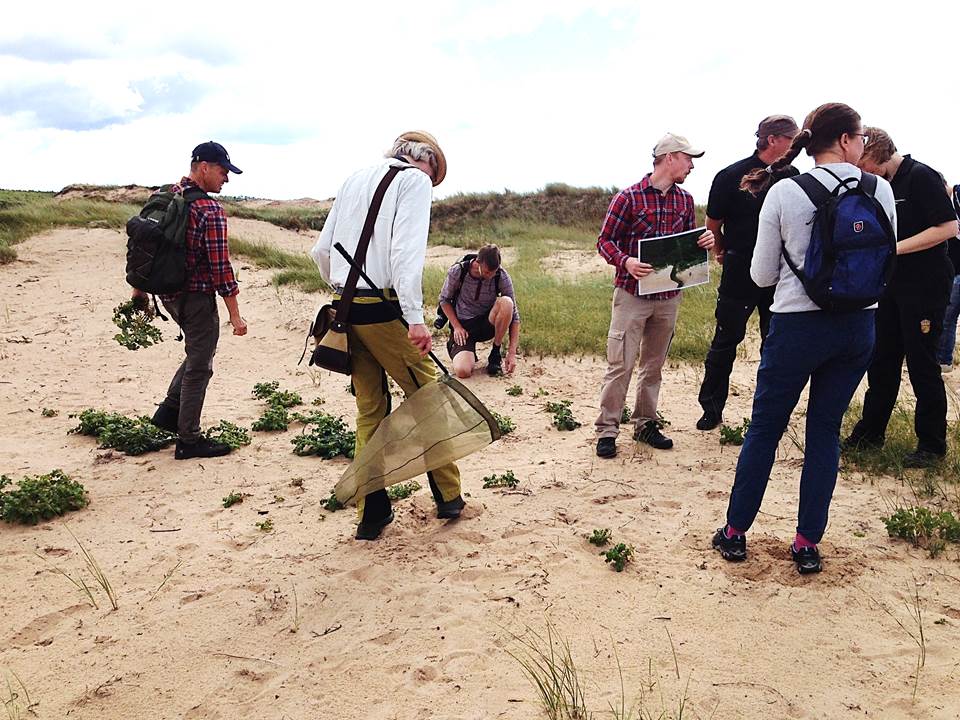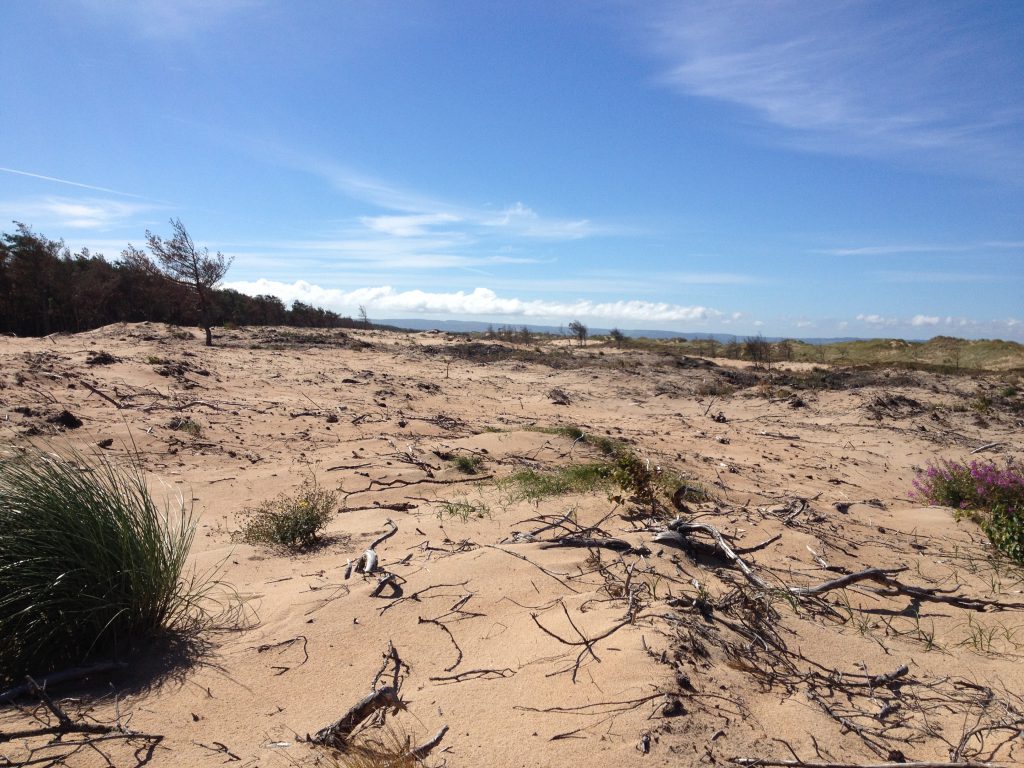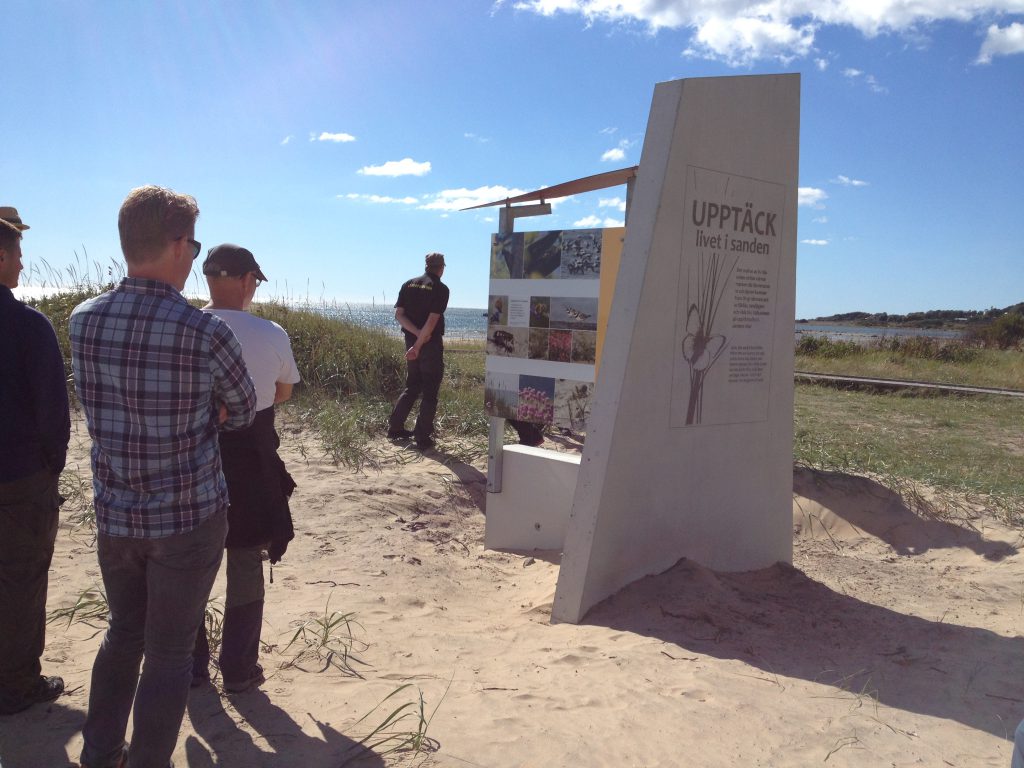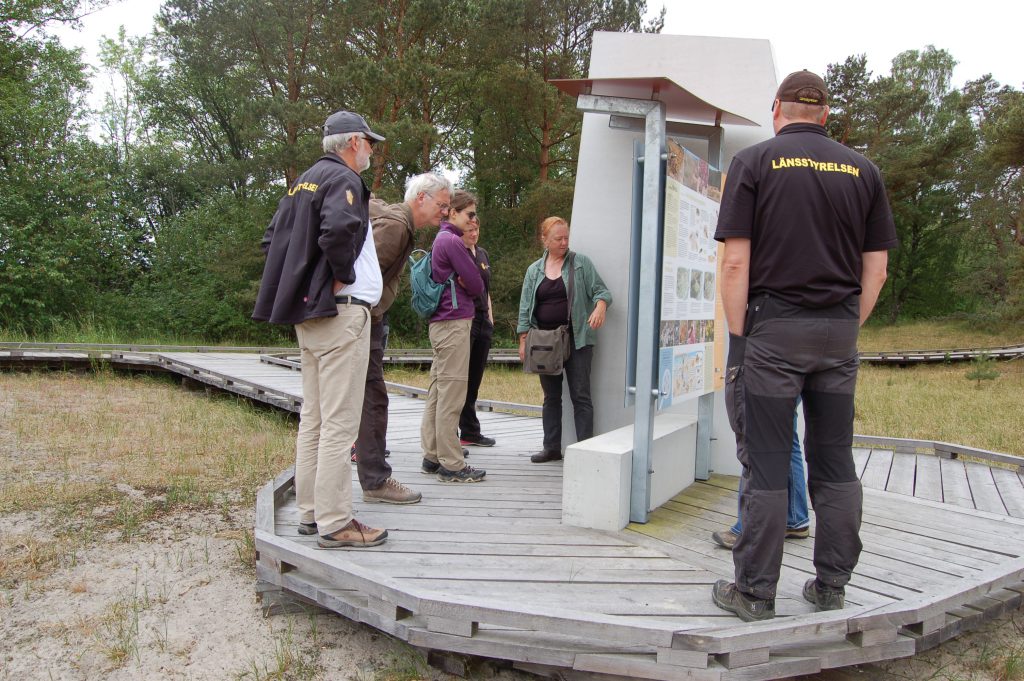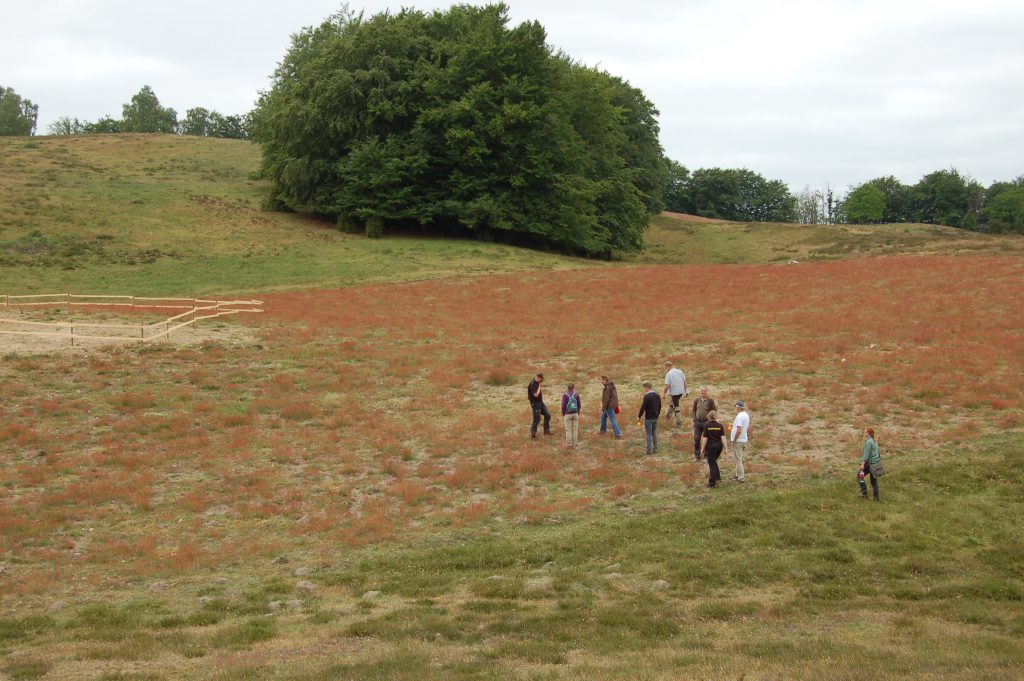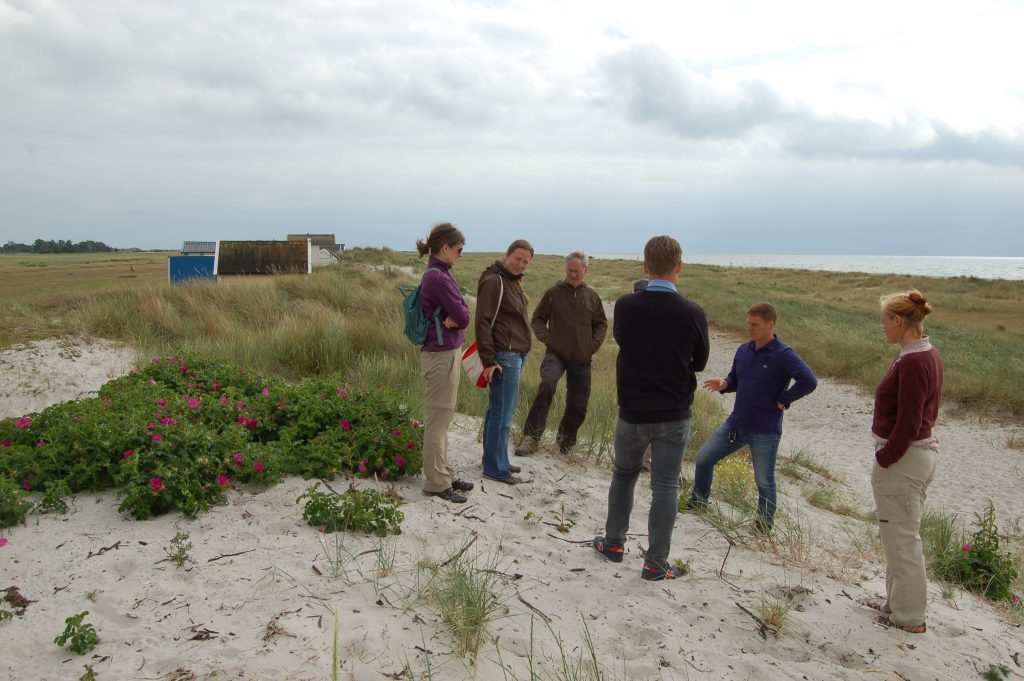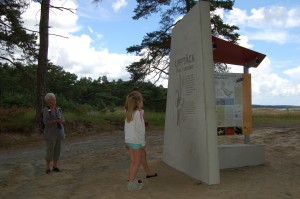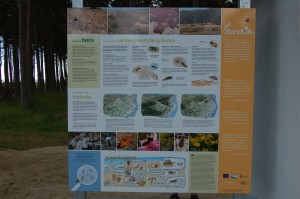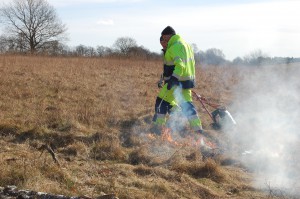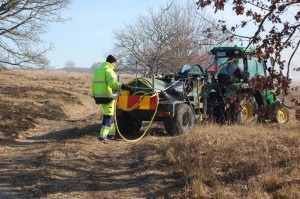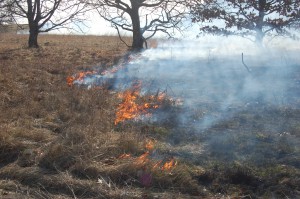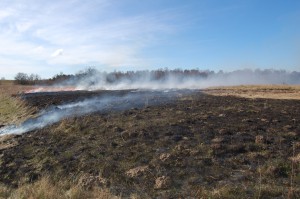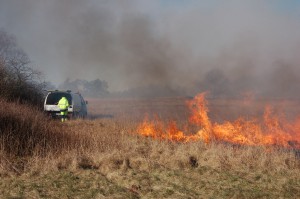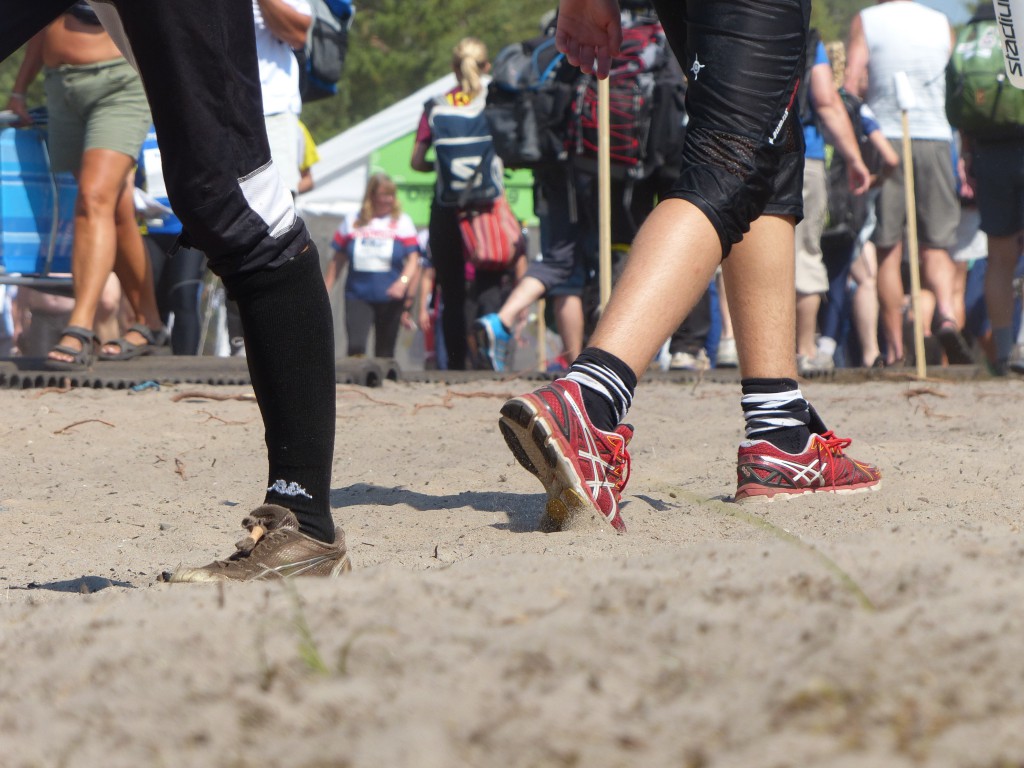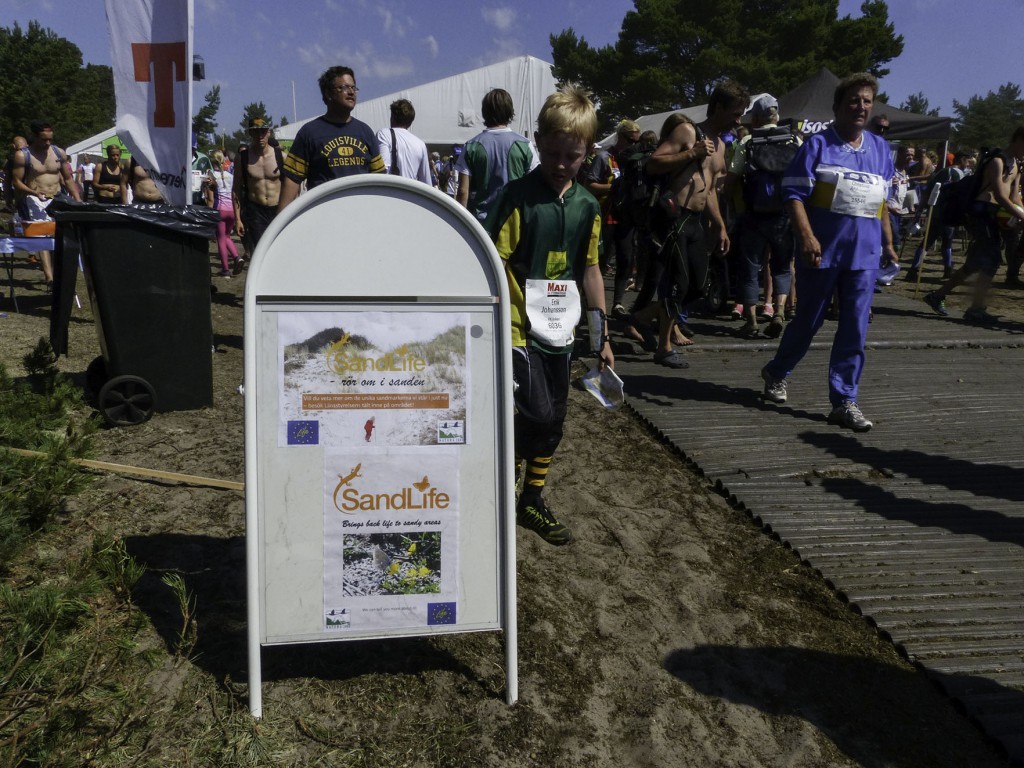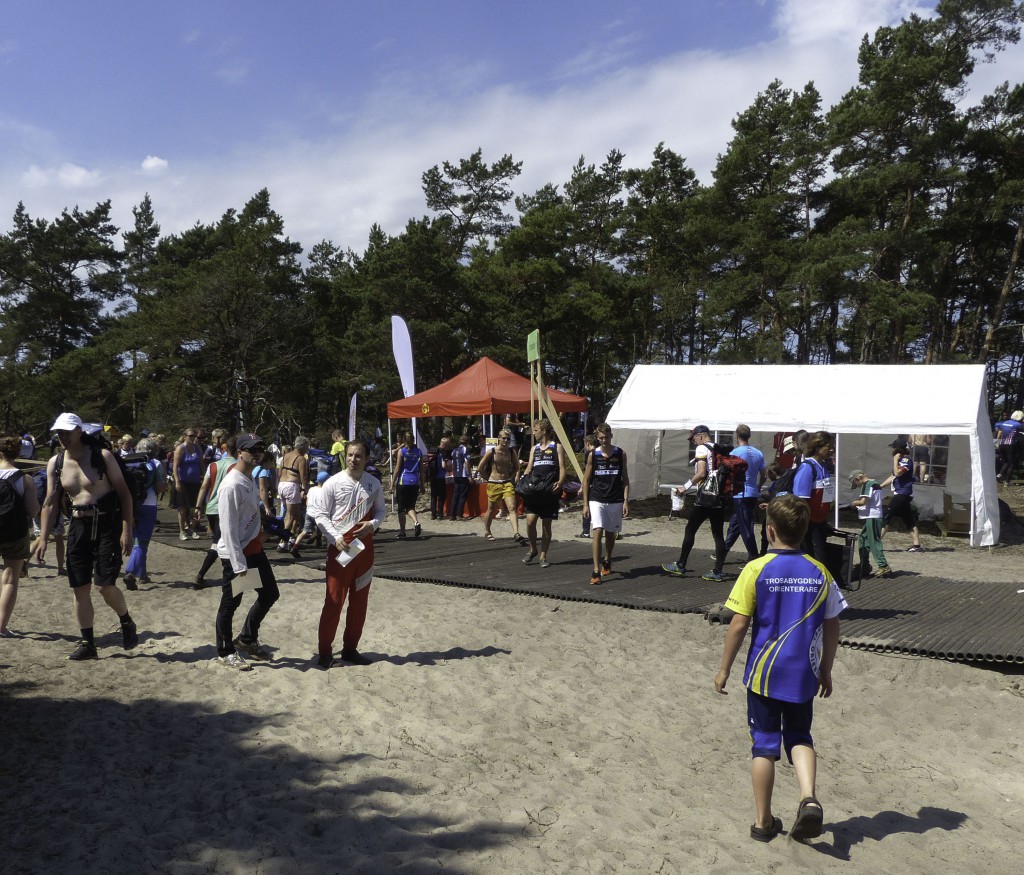During the project’s final conference, a management manual was released on how sandy habitats can be restored and maintained. In the manual “Restoration and Management of Sandy Habitats in Southern Sweden” you can learn from the experience of Sand Life.
The Final Conference in Sand Life
The sun shines over the project’s final conference held in Kristianstad 22-24 May. During three successful days, everything that was carried out within the project was presented and what effects it had on the species and sandy habitats. Experts were in place and gave their views on the sandy fields and the need for care and international guests told us what is going on in the sandy fields in the rest of Europe.
Those who want to know more about what is being raised during the conference can see all the presentations here.
A negative trend has been turned – the Tawny pipit increases in Sweden again
Positive results from Sand Life – the rare bird Tawny pipit (Anthus campestris) increases again and a negative trend has finally been turned. Since 2013, the number of home ranges in Skåne – the only ones in the country – have increased by 20 percent. The increase has a direct connection with the restorations within the project.
A Tawny pipit (Anthus campestris) at Brösarp in southern Sweden in 2017. Photographer: Patrik Olofsson
The trend at the beginning of Sand Life
Over the past 100 years, the open sandy fields have decreased drastically in the landscape, a consequence of, among other things, the exploitation and planting of species such as Mountain pine and Japanese rose. The development has been devastating to many plant and animal species, including the Tawny pipit. The Tawny pipit was a relatively common bird in Skåne in the early 2000s, and was occurring in sandy habitats in southern Sweden, but it has become increasingly unusual as the open sandy areas have decreased.
According to the Artdatabanken, 1983 was still 210 home ranges in Skåne and 50 in Halland. In 2013, the ornithologist Patrik Olofsson counted the number of home ranges that had dropped to only 33, all in eastern Skåne, the lowest ever figure.
Clear rise at the end of Sand Life
After the restoration actions in Sand Life, with removal of pine trees and Japanese rose and increasing the amount of bare sand, Patrik Olofsson has counted the birds again. The new inventory shows a clear increase of Tawny pipits and 40 home ranges were found in 2017. The inventory shows a large number of birds on and around newly opened, burned or otherwise treated surfaces (eg, Brösarp’s northern slopes, Ravlunda, Drakamöllan, Kumlan-Möllegården). The negative trend has not only stopped; it has also turned!
Actions in action
Now the actions of restoring the sand dunes have speeded up along the coast of the Natura 2000-site Laholmsbuktens sanddynsreservat in southern Halland. If you follow the link below, you can see a small cut scene of how a caterpillar creates patches of bare sand. To remove encroachment, Japanesee roses and mountain pine we sometimes need to take the help of powerful machines. All root parts must be removed so that the bare sand will be keept open for a longer period of time. This is one of the measures we have in the project Sand Life, whose goal is to rebuild parts of the former open sandy soils with a mosaic of flowering herbs and sun-exposed patches of bare sand .
Here you can find a link to the film about the active creation of sand patches.
Sand and LIFE in Munich
In August 2016, Sand Life was invited to speak at a workshop on the theme restoration of sandy habitats in LIFE-projects in German Freising outside Munich. Sand Life highlighted the lessons we have learned in the Project so far, both in terms of restoration actions and the importance of communication. The workshop was part of a larger conference SER2016 of “Best Practice of Restoration” with 330 participants from 41 countries.
Other projects the were presented was grassland restoration in the German Sandrasen by Holger Rossling, restoration of coastal dunes in the German part of the project “Life Balt Coast” by Hauke Drews, restoration of xeric calcareous sandy grasslands in the Belgian project “Life Herbages” by Youri Martin and Klaus Kretschmer showed results from the project “Life oak forests”. The presentations are in English and can be downloaded from the website of Sandrasen.
What has happened in Halland?
At a mini-workshop in 16th and 17th of August the project managers met up at the project sites in the County of Halland to discuss restoration actions and best practice. The regional project leader Magnus Nystrand showed the results after the hard work of removing Rosa rugosa in the sand dunes. The majority of the plant material has been removed and the discussion now is what to do with the remaining tilling’s coming up.
At large areas Pinus mugo has been removed and here we can see the sand reclaiming the site.
At four locations in the sites, the project outdoor museums have been built up to inform the public about the values in the sandy habitats and how to manage them. Here the outdoor museum at Laholmsbuktens sanddynsreservat.
The European Commission visits Sand Life
For two days in June 2016 Sand Life was visited by the technical officer Ana Klenovsek at the European Commission and the external monitor Inga Racinska. The purpose of the visit was to see how the project progress and we took the opportunity to show some of the major restorations to the visitors. The first stop was at the pre-restored Gropahålet where mountain pines have been felled to make way for large clearings with brilliant white sand. Information boards and the outdoor museum at Friseboda with a ramp for disabled visitors. In the hilly landscape at Drakamöllan, the 3 hectares ploughed grasslands were showed, as well as the prescribed burnings of heather and newly created sand patches. At the Falsterbo peninsula in the southwest of the county of Skåne, we visited the sandy reefs outside Falsterbo where 6.3 hectares hvae been cleared from Japanese rose (Rosa rugosa), and where the difficulty of removing an alien and invasive species were discussed. Finally the 20 hectares of cleared overgrowth of birch at Falsterbo firing range was shown, together with one of the project’s newest outdoor museum. During day two, the European Commission’s financial officer Tommy Sejersen and the external auditor Peter Mecko to discuss the project’s financial progress.
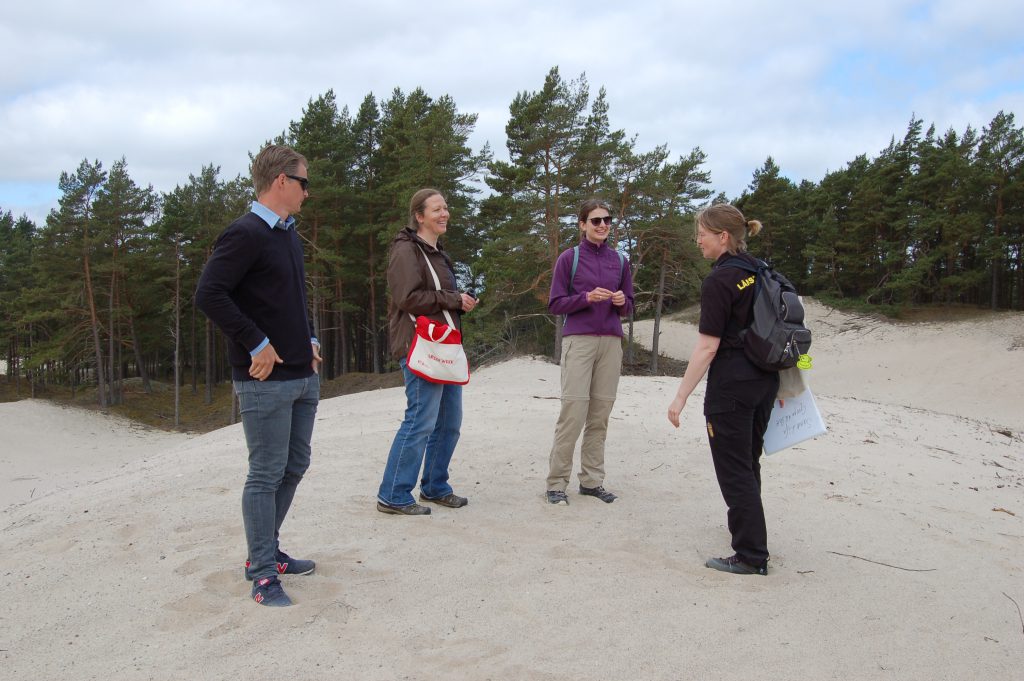
Marit Hedlund shows the sandy gaps in the wooded sand dunes of Gropahålet to the European Commission.
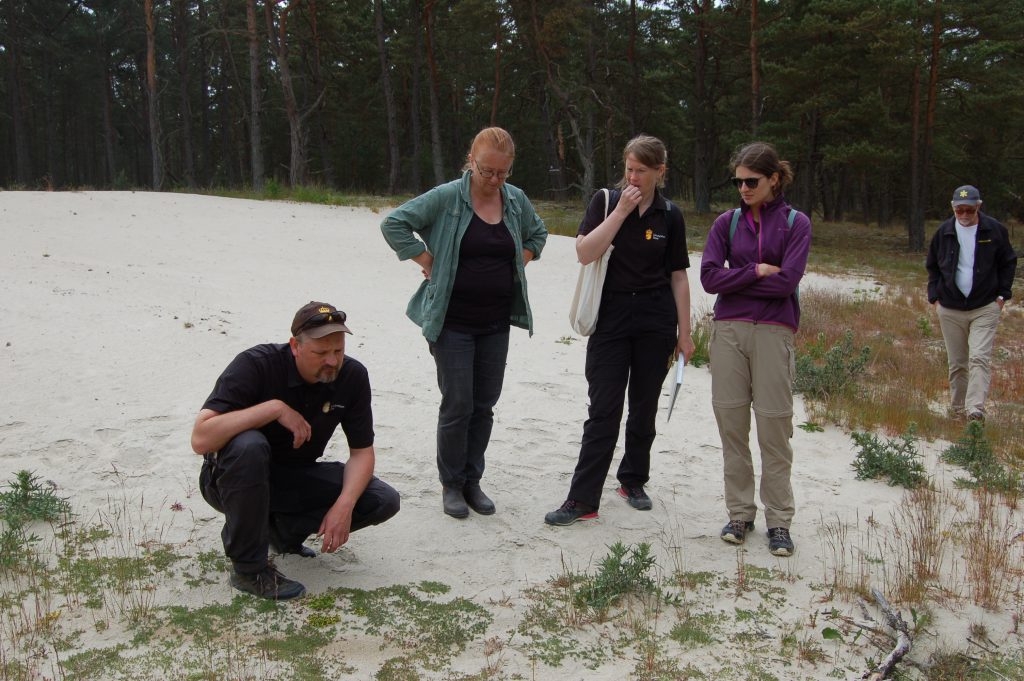
Already during the second growth season, the wild thymes (Thymus serpyllum) has colonized the edges in one of the newly created sand patches at Gropahålet.
The first outdoor museums in Sand Life
The first outdoor museum in Sand Life was displayed for the public at Rinkaby firing range in Skåne at the 2nd of June 2014. The monument is build close to the flowering calcareous grasslands “sand steppe”, one of the most unique sandy soils in southern Sweden, and explains why the area is so special. Open Air Museum has three major components; they signal that life in the sand is extremely rich in species, they give us information on sandy soils and ultimately what is most exciting in that particular area.
-An Outdoor museum gives us information about what we see on the ground, says Karin Hernborg from Kristianstad Water Reserve that is responsible for the production of twelve outdoor museums in Sand Life. At Rinkaby firing range we learn why the military operation has been so important to the natural values of the field, the exciting discoveries that can be done on site and the endangered species that is so unique in the area. At Rinkaby you should try to find bugs in the dung, smell the fragrant pinks and listen to the wooded tree lark warbling ly-ly-lu-lu-lo in the air. -Our Outdoor museums are important tools in communicating why we need to restore sandy soils, says Gabrielle Rosquist project manager for the EU project Sand Life. Should we not lose the high number of threatened species and habitats that are available on the sandy soils, these must be opened up for animals, plants and fungi, as well as, becoming more accessible to us as visitors.
Anyone who does not get to Rinkaby firing range can look at a similar outdoor museum at Friseboda south of Ahus.
Spring-burnings in Sand Life
Spring is here and before the grass begins to sprout Sand Life burns off the old grass and woody heather. The National Fortification Administration is helping the project with the burnings on Revingefältet. Preparations with harrowing firebreaks are already made. With propane burner and water tanks and careful planning, selected areas are put on fire. In a few weeks, the burnt surfaces will sprout with new grass and eventually with flowering herbs.
Orienteering helps Sand Life in Friseboda
Sand Life was present when one of the largest orienteering festivals in the world, O-ringen, was held in the nature reserve Friseboda. During a hot and sunny day more than 20,000 orienteers ran in the sanddunes and helped us fight encroachment by stirring up the sand.
On July the 22th in 2014 the world largest orienteering competition, O-ringen, had one of its location at Friseboda, one of the project sites of Sand Life. We set up our tent with information about the project close to the starting point and the whole day, we talked about Sand Life, the area’s unique natural beauty, and the species that live here — from the rare Tawny pipit on the sandy heaths to the small antlions in their sunlit holes in the gaps of the pine forest. At the same time we talked about the need of restoration actions and many of the visitors were happy to know that the event was not harmful to the nature but in fact, the running of thousands of feet helped us in our restoration work.
Maria Sandell, regional project manager, had many opportunities to talk about why the dense mountain pine plantations had been taken down in the area and the need for more of the open, sunlit surfaces. The goal of our restoration work is an area which include many different habitats – from the dense pine forest, the more open wooded dune with sunlit gaps as well as open sandy heaths.
During the winter two major mountain pine plantations have been removed, one which was situated close to Arena area. We had made arrangements with O-ringen to wait with removal of some of the mountain pine plantation to give orienteers a really tricky area and there were many people who had trouble finding the controls in the dense mountain pine. In the winter of 2014/2015, we will continue to remove the mountain pine plantations.

